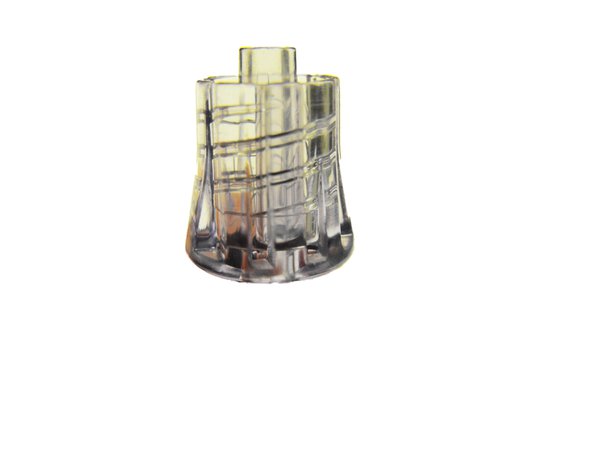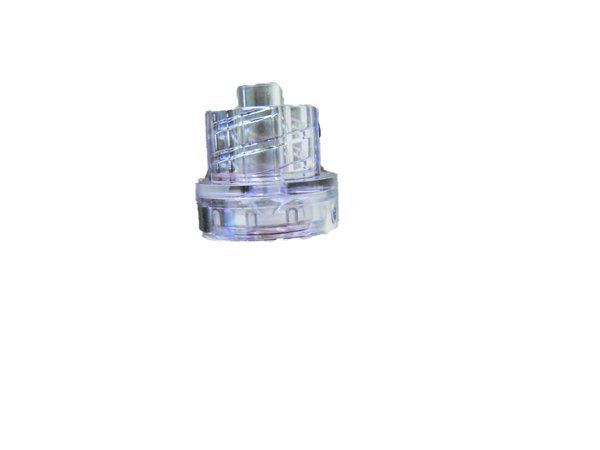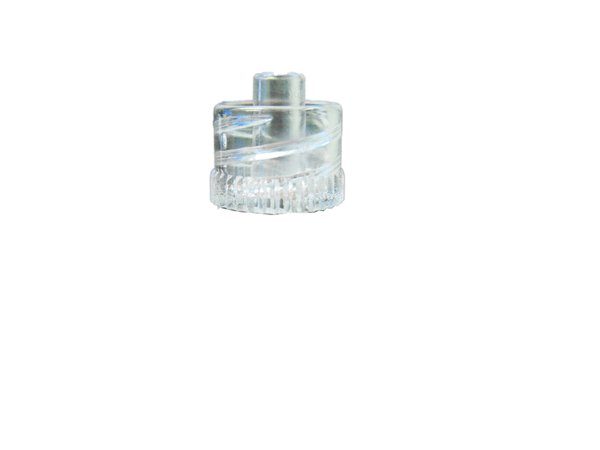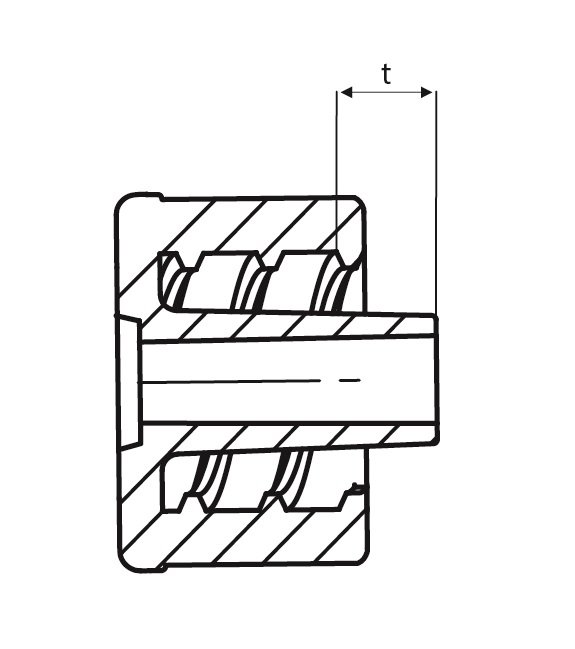ISO 80369-7 luer standard: What this means for plastic luer users
Dave Splett, vice president of business development for manufacturer Injectech, explains how the ISO 80369-7 luer standard could potentially affect all plastic luer users.
The goal of ISO 80369 is to standardise connector use for common procedures. It aims to essentially move away from the luer connector as a standard interface for different devices in order to avoid misconnections which could result in injuries or death.
As many of us in the medical device industry have heard there is a new luer standard called ISO 80369-7. This standard applies specifically to intravascular and hypodermic applications with the goal of standardising the luer taper and thread. However, the impact will most likely affect everyone that uses a plastic luer.
Many original equipment manufacturers are currently in the process of considering this change even though the “go live” date has been pushed back by the Food and Drug Administration (FDA). Whether you are a vascular company, a company that uses other manufacturers’ products, or are not included in the specific intravascular and hypodermic call out in the standard, there are some items you may want to consider. The following outlines information regarding the relationship between the ISO 594 and new ISO 80369-7 standards.
ISO 594-2
The ISO 594-2:1998 standard references materials in the scope section. The requirements apply to rigid and semi-rigid materials, and as per the standard, metal and glass are considered rigid whilst many plastics are considered semi-rigid. The standard excludes a provision for flexible and elastomeric materials. Section 3.2.2 of the ISO 594-2 standard states that for fittings using semi-rigid materials (e.g. most plastics) it is not possible to specify the fitting’s dimension accurately. The fitting should, however, pass the functional and performance requirements. Therefore, a bare minimum of dimensions must be met to connect to the female luer.
If a component manufacturer designed the male and female threads exactly to the ISO 594-2 dimensions a problem will occur. The thread profile combined with a softer material (such as nylon, polypropylene or high-density polyethylene) easily allows the luer to be over-rotated resulting in a damaged thread and unsecure connection. This is why many component manufacturers state their luers “mate with” other luers designed to the standard. They therefore pass the performance requirements, but not all of the dimensional requirements. Depending on the end user, the luer can either be in compliance or not. Compliance to ISO 594-2 is truly subjective when considering plastic luers.
ISO 80369-7
The new ISO 80369-7 standard states that both dimensional and functional requirements must be met for compliance, as well as the semi-rigid and rigid dimensional requirements. Unlike ISO 594-2, the new standard adds a flexural modulus of 700 MPa or higher – any softer material cannot be used for compliance to this standard.
ISO 80369-7 also states that by using modern test equipment and methods, it is now practical to define the dimensions with greater precision. This means that component manufacturers using plastic materials must now comply with the dimensional requirements.
ISO 594 compatibility with ISO 80369-7
ISO 80369-7 used some of the requirements and parameters from ISO 594 where applicable. Therefore, if a luer complies with ISO 80369-7, it is backwards compatible to ISO 594. A plastic luer that only passes performance testing (ISO 594) will not be compatible with ISO 80369-7.
A potential misrepresentation of ISO 80369-7 compliance
Recently, the FDA has stated that it will accept the ISO 594-1, ISO 594-2 and ISO 80369-7 as options and will be recognised as consensus standards until ISO 80369-7 is re-released. This makes sense as the ISO 80369-7 standard is backwards compatible to ISO 594 as mentioned above. However, some companies may try to work this statement into design transfer activities.
Example case study
1. ISO 80369-7 is backwards compatible to ISO 594
2. Our luers pass the performance testing in ISO 594
3. Therefore, we can use section 3.2.2 in ISO 594-2 to exclude the dimensional requirements of ISO 80369-7
Please note: All dimensional and performance requirements in ISO 80369-7 must be met to claim compliance.
The benefit of dimensional compliance
The following are several different designs of ISO 594 luers. As you can see, the thread starts in different places and the result is potential luer to luer incompatibility.
To have a mating luer under ISO 594, the threads should meet the thread pitch, thread width and correct angles. Once you factor in different materials and clause 3.2.2, the waters become muddy quickly. As you can see from the pictures above, there is an interpretation issue. If the luer thread from one manufacturer has a thread that starts further back inside the male luer connector it will allow the luer tapers to engage, however, the locking function is compromised. Conversely, if the thread is too aggressive, it will not allow the luer tapers to correctly seal resulting in over rotation and a potential leak.
The “t” dimension
The new luer standard specifies the “t” dimension for the male luer thread. The “t” dimension measures from the end of the male luer to the first fully formed thread. This has the potential to be problematic as typically, the internal threads of a male luer, taper down to the fitting’s wall and have a radius determined by the design. One may question where exactly the correct point is to measure the fully formed thread.
Our solution
Although the “t” dimension in ISO 80369-7 can be challenging to meet, it is an integral dimension that will help eliminate the potential of luer to luer incompatibility by standardising where the thread begins in relation to the end of the male luer.
Injectech has spent numerous hours refining tooling to meet the “t” dimension. This has been confirmed through use of a computerised axial tomography scan by a third party which has certified that our ISO-80369-7 luers are in complete compliance with the standard.
Moving forward
It is absolutely necessary that medical device OEMs confirm that a component manufacturer’s claims of ISO 80369-7 compliance, do in fact include all of the standard’s performance and dimensional requirements such as the “t” dimension when moving forward.
While we wait for the next revision of the ISO 80369-7 standard to be released, it would be beneficial to consider the following:
1. Eventually the standard will be enforced by the FDA. If your application falls into the end use scenarios specified in Table E.2 of the ISO 80369-7 standard, you should start considering component manufacturers and their ability to comply.
2. If your application does not fall into this group, understand that intravascular and hypodermic applications are the highest volume users of luers as evidenced by the title of ISO 80369-7. As component manufacturers adjust tooling to meet the new standard, the old ways of manufacturing ISO 594 luers to performance requirements only, will eventually be abandoned.
Although this standard is application specific, it has a far reaching effect on everyone in the medical device industry that uses a luer as a component part of their device.
- KingPo Delivers and Installs State-of-the-Art Dust Chamber in Korea, Enhancing Local Testing Capabilities
- Fatal mistakes in IPX9K waterproof test: nozzle size and water temperature control, the truth you must know
- What are the implications for manufacturers transitioning from ISO 594 to ISO 80369-7?
- KINGPO Company Unveils Next-Generation Electrosurgery Analyzer
- KINGPO 2024 R&D Results Report
- ISO 80369-7:2016 Connectors with 6% (Luer) taper for intravascular or hypodermic applications What is the ISO 80369-7 standard? What happened to ISO 594-1 and ISO 594-2?
- Saudi Arabian Customer Purchase ISO 80369-7 reference connector and ISO 80369-20 test apparatus from us
- ISO 80369-3 Test Equipment LIst
- Essential Considerations for Small-Bore Connector Testing Equipment
- Medical Device Pressure Validation: Ensuring Accuracy and Reliability







